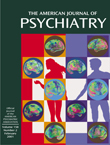To the Editor: David Michelson, M.D., et al.
(1) appropriately demonstrated that neither buspirone nor amantadine was more effective than placebo in the treatment of antidepressant-induced sexual dysfunction in women. Their results apparently are not in agreement with those of Landén et al.
(2), who showed the superiority of buspirone to placebo for antidepressant-induced sexual dysfunction, particularly in women. However, this discrepancy suggests the possibility that the effects of buspirone on sexual dysfunction might abate with continued treatment, owing to the desensitization of serotonin
1A autoreceptors, because Dr. Michelson et al. administered buspirone for a longer period (8 weeks) than Landén et al. (4 weeks).
On the other hand, although the study by Dr. Michelson et al.
(1) was not primarily aimed at evaluating the efficacy of the combination of fluoxetine and buspirone in treating affective symptoms, I will comment on this issue. Several case studies and open trials showed the efficacy of buspirone added during antidepressant augmentation
(3). In the first controlled, double-blind trial
(4), however, buspirone augmentation of a selective serotonin reuptake inhibitor (citalopram or paroxetine) in patients with refractory depression failed to demonstrate any difference in efficacy from placebo augmentation.
The study of Dr. Michelson et al.
(1) seems to be a second such study, although most of their patients were almost recovered, as indicated by their Hamilton depression scale scores. Nonetheless, the results of visual analogue scales measuring mood and energy did not indicate their complete recovery. The fact that amantadine added to fluoxetine significantly improved energy levels and approached statistical significance for mood improvement strongly supports the possibility of at least subjectively insufficient recovery of the patients’ depression at baseline. The mean mood changes in the visual analogue scales from baseline (higher values represent greater improvement) were 8.7 (amantadine added), 1.4 (buspirone added), and 0.6 (placebo added); the mean energy changes were 9.5, 2.1, and –3.2, respectively. There was no difference between the addition of buspirone and the addition of placebo in mood or energy change, although the addition of amantadine was significantly better than the addition of placebo, particularly in energy change. Also, there was no difference among the groups in changes measured by the Beck Depression Inventory. These findings suggest that buspirone added to fluoxetine cannot improve subjective mood or energy in mild depression.
Although Dr. Michelson et al.
(1) did not mention this suggestion because it was not their purpose, I believe that this is important information to note until further placebo-controlled, double-blind studies clarify the role of buspirone in antidepressant augmentation.

